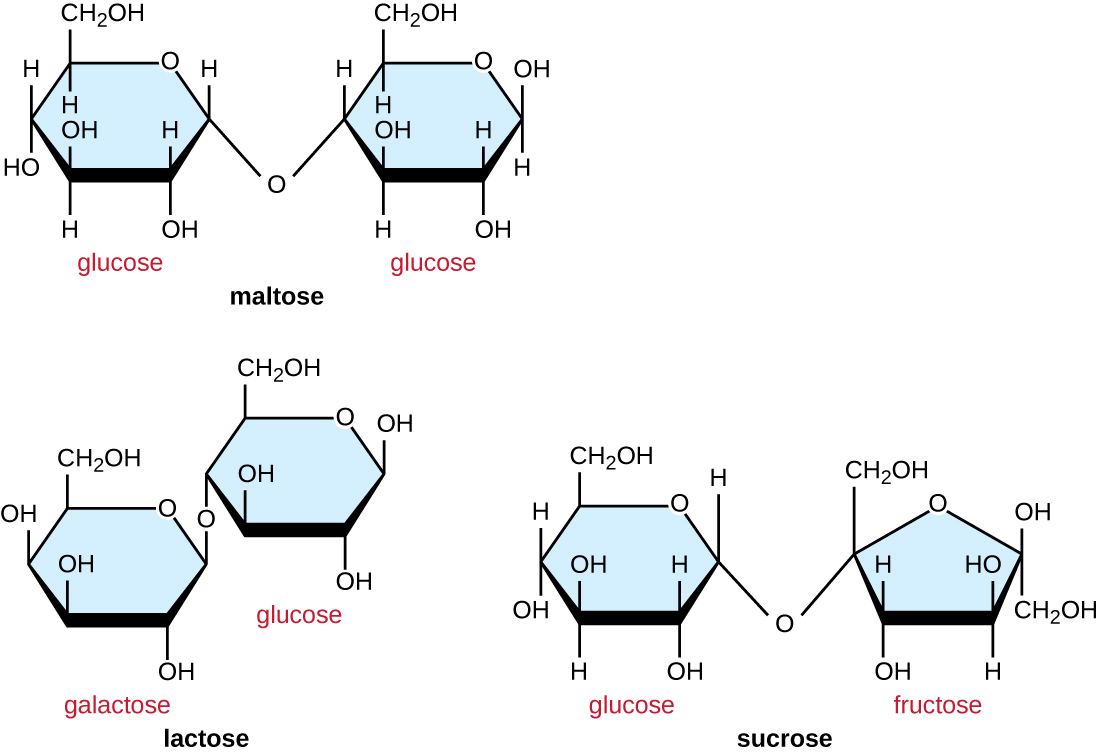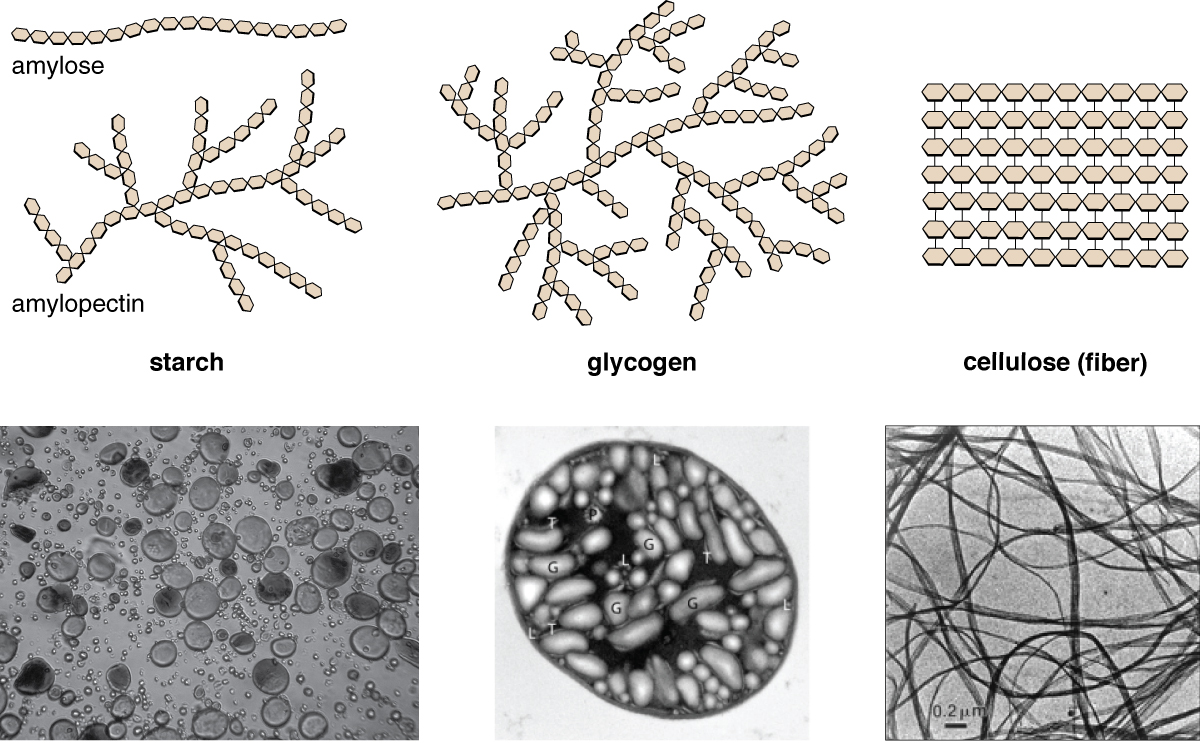| << Chapter < Page | Chapter >> Page > |
Common disaccharides are the grain sugar maltose , made of two glucose molecules; the milk sugar lactose , made of a galactose and a glucose molecule; and the table sugar sucrose , made of a glucose and a fructose molecule ( [link] ).

Polysaccharides, also called glycans , are large polymers composed of hundreds of monosaccharide monomers. Unlike mono- and disaccharides, polysaccharides are not sweet and, in general, they are not soluble in water. Like disaccharides, the monomeric units of polysaccharides are linked together by glycosidic bond s.
Polysaccharides are very diverse in their structure. Three of the most biologically important polysaccharides— starch , glycogen , and cellulose —are all composed of repetitive glucose units, although they differ in their structure ( [link] ). Cellulose consists of a linear chain of glucose molecules and is a common structural component of cell walls in plants and other organisms. Glycogen and starch are branched polymers; glycogen is the primary energy-storage molecule in animals and bacteria, whereas plants primarily store energy in starch. The orientation of the glycosidic linkage s in these three polymers is different as well and, as a consequence, linear and branched macromolecules have different properties.
Modified glucose molecules can be fundamental components of other structural polysaccharide s. Examples of these types of structural polysaccharides are N-acetyl glucosamine (NAG) and N-acetyl muramic acid (NAM) found in bacterial cell wall peptidoglycan. Polymers of NAG form chitin , which is found in fungal cell walls and in the exoskeleton of insects.

Match each polysaccharide with its description.
| ___chitin | A. energy storage polymer in plants |
| ___glycogen | B. structural polymer found in plants |
| ___starch | C. structural polymer found in cell walls of fungi and exoskeletons of some animals |
| ___cellulose | D. energy storage polymer found in animal cells and bacteria |
C, D, A, B
What are monosaccharides, disaccharides, and polysaccharides?

Notification Switch
Would you like to follow the 'Microbiology' conversation and receive update notifications?